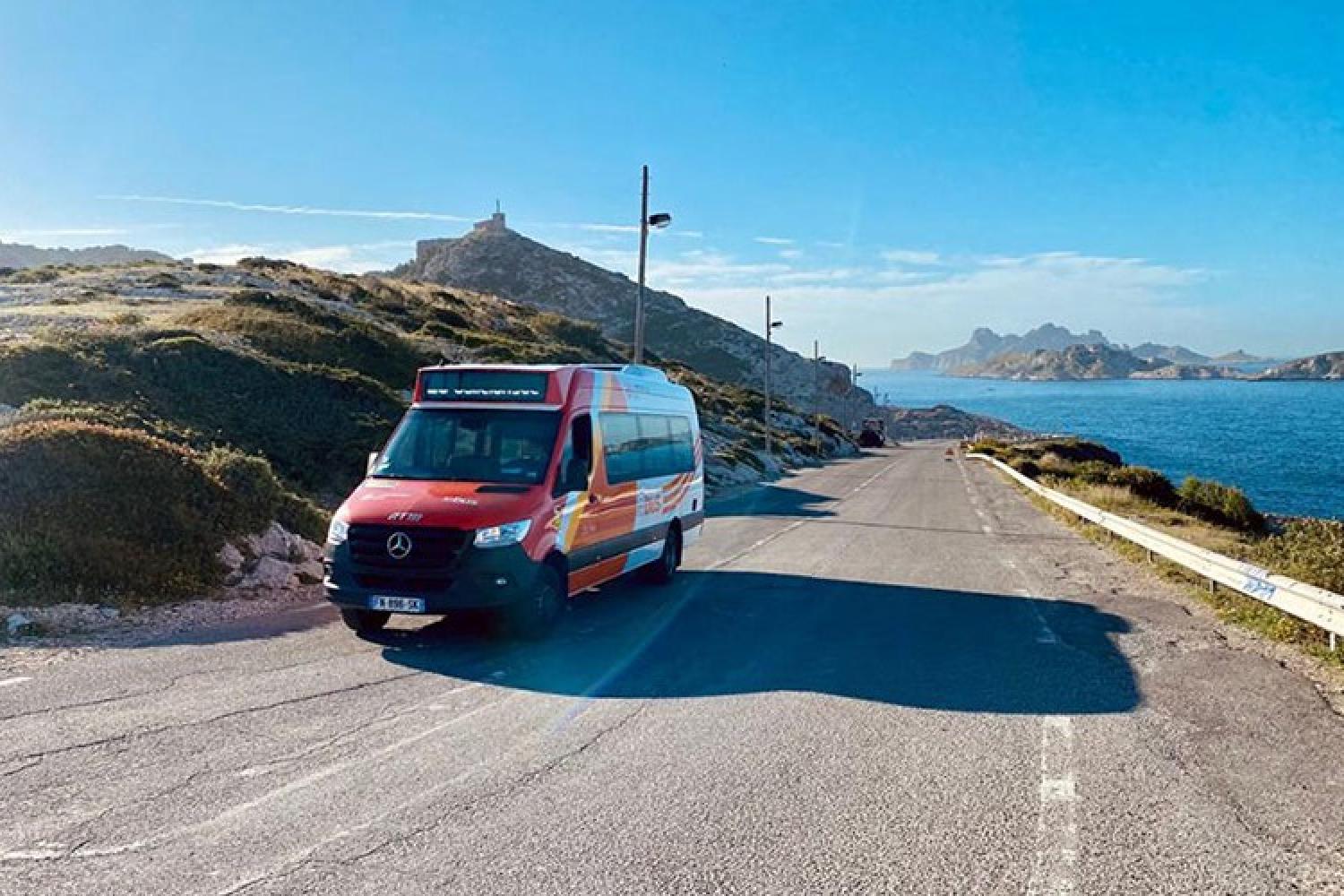Offering a peaceful transitional space between town and nature
Working closely with local authorities
This work is being carried out jointly with the Aix-Marseille-Provence Metropolis within the framework of the guidelines defined by the Urban Travel Plan and with the municipalities and town halls concerned. It was devised in the form of consultation workshops involving the various local players representing local residents, users, economic activities and the institutional and technical services concerned with the management of these sites. Four priority focuses emerged from these workshops and the resulting proposals:
- Controlling the number of visitors in the core areas of the National Park
- Taking into account the inhabited nature of the Calanques National Park
- Taking into account the urban reality of the National Park environment
- Taking into account the topographical characteristics of the National Park
Progress between 2019 and 2021
By the end of 2018, this process had led to the definition of co-constructed and documented scenarios for improving access conditions at the five main gates. Then the overall plan for all the gates was proposed, focusing on overall consistency, the possible carry-over effects between different gates, etc. A detailed programme, costed action sheets and multi-partner agreement projects were then prepared for implementation.
In 2020 and early 2021, this partnership work was given general political approval.
Since then, work has focused on :
- the drafting of specifications for project management for all the gates, with overall consistency
- initiating the implementation of the three most urgent measures identified in the access plan, in conjunction with the relevant players (Métropole, RTM, the towns of Marseille, Cassis and La Ciotat, Conseil départemental, Conservatoire du Littoral...)
1. Improvement in alternative mobility services to the car
- Increasing the frequency of buses 19 and 20 that provide access to the southern coast of Marseille and bus 22 providing access to Les Baumettes (Métropole - RTM)
- The possibility of increasing the number of passengers in the Pointe Rouge / Les Goudes sea shuttle (Métropole - RTM)
- Installation of bicycle racks along the southern coast of Marseille
- Deployment of self-service bicycles (City of Marseille and LIME)
2. Limiting the number of cars
- Barriers and checkpoints to limit cars in natural areas: Logisson (private property), Route de la Maronaise at Cap Croisette (Calanques National Park property), access to the Callelongue village core area at the viewpoint indicator (property of the Métropole and Ville de Marseille), Port-Miou (Conservatoire du Littoral property) and ahead of this point (town of Cassis), Routes du Feu at Les Baumettes and at Sormiou (Ville de Marseille)
- Channelling of cars to car parks that have been redeveloped for simple and temporary maintenance: Goudes-Napoléon and Luminy-Kedge (Métropole)
- Verbalisation of illegal parking and removal of vehicles that impede the passage of public transport (towns)
3. Information and raising awareness
- Public transport services on the RTM website
- Installation of variable message signs on the approach to the David statue and La Pointe Rouge to inform the public about traffic and parking difficulties on the southern coast of Marseille (Metropole)
- Informing motorists on the Waze app about traffic and parking difficulties, directing them to existing urban car parks and encouraging them to use public transport and bicycles on the southern coast of Marseille and in Luminy (Waze, Regional Tourism Committee, Metropolitan Tourist Office and Calanques National Park)
Limiting cars in natural spaces
On 20 February 2019, in a letter sent to the City of Marseille and the City of Cassis, the two private owners of the road known as "Route de la Gardiole" or "Route Gaston Rébuffat", announced their decision to permanently close vehicle traffic on their properties from the RD 559 Route de la Gineste at Logisson - Carpiagne. In accordance with private property law, this decision took effect immediately. The Calanques National Park and the Office National des Forêts have expressed their solidarity with the owners' decision. Also closed to car traffic are the Cap Croisette (since March 2021) and the car park at the end of the Calanque de Port-Miou (since July 2021), decisions taken by the Calanques National Park and the Conservatoire du Littoral in consultation with their partners and the population.
These limitations are in line with the long-term guidelines for the gradual withdrawal of private cars from the core zones of the National Park that the Calanques National Park has set itself, in conjunction with its partners. This is in accordance with the Calanques National Park visitor strategy, the access scheme and the landscape action plan. The chosen response to this problem is particularly relevant in configurations where the concentration of vehicles on narrow, dead-end roads generates safety problems. These closures are in line with the thinking behind mobility and development policies, aiming to withdraw cars from busy areas (town centres or natural sites) in favour of soft mobility or public transport. They also make it possible to assert the character of the National Park as a place of peace and relaxation. Aware of the upheavals that these decisions will cause in the habits of the territory's users and the development solutions that they will require, the Calanques National Park, the local authorities and their partners will ensure that these measures are accompanied by the necessary dialogue with the users and alternative developments.
At Logisson - Carpiagne, one of the priorities is to move forward, with the local authorities, on the development of a car park and platforms for public transport (M08 Marseille-Cassis shuttle bus, part of the Marcouline network, etc.) on the edge of the Route de Gineste (RD 559). The Calanques National Park, as project owner, has now chosen its project manager, TOPO*GRAFIK, to begin the operational phase.



 Links
Links